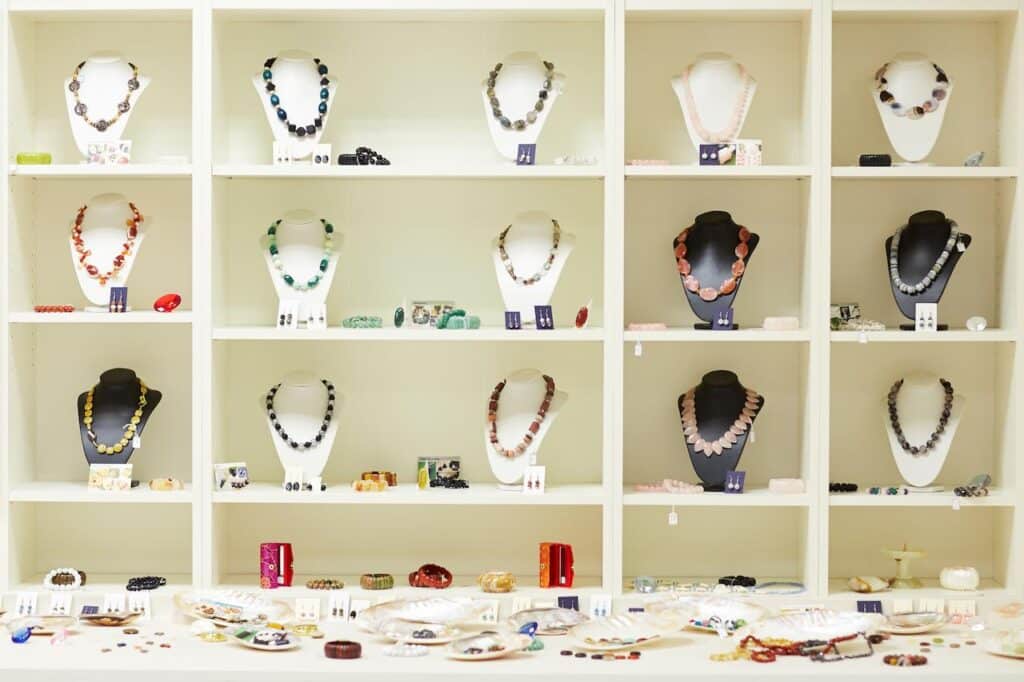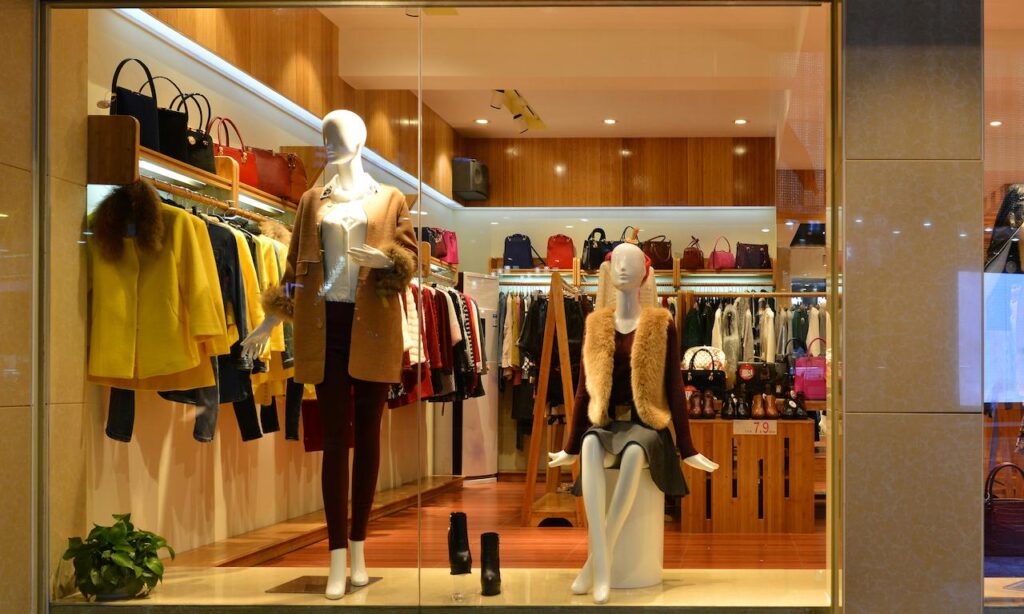Window Displays Boosting Sales
Customers often judge your retail store by the window. The window display of a shop is often the first thing that potential customers see, and this first impression can influence whether or not they choose to enter. The design and management your window displays is not only an art but also a crucial part of your marketing strategies. Your window display is not just to show off products. It’s also meant to entertain, inspire and create curiosity.

Window Displays Boosting Sales
Why Window Displays are Important
The average retail consumer has a limited amount of time and scans store windows quickly as they pass. In the fast-paced retail world, consumers rarely have time to think about their purchase. They scan store windows in just five seconds. This is a short window of opportunity for your window to communicate what you offer, as well as why they should stop and look around. Your window display will likely not be noticed if it doesn’t catch their attention.
Your window display is a key point of differentiation in a retail environment filled with similar stores. Customers are unlikely to remember a particular window display if every shop in your shopping district uses the same generic ideas. It’s up to you to make sure your window display stands out and leaves a lasting impression. It means being creative, daring to be different, and taking risks to create a window display that represents your brand and store.
You can make your window display more appealing by investing some time and effort into it. This will create an “wow factor”, which will attract people, stimulate curiosity and build a relationship with your brand.
The Three Main Types Of Window Displays
It is important to understand the layout and design for different types of window displays in order to create effective displays. Retailers use three types of windows: closed-back, semi-closed back, and open-back. Each window type has its own advantages and challenges when it comes to visual merchandising.
1. Closed-back window displays
A closed back window has a semi-permanent or permanent wall in the rear, which effectively separates the window display and the selling area inside the store. This type of window allows you to create a dynamic, theatrical look, since it gives you more control over lighting and props. The back wall of the store becomes a blank canvas to display your products.
You can manipulate the lighting to highlight key elements in the display and create a dramatic ambience. You can also experiment with different materials and props.
Display Tips for Closed Back Windows
Elevate merchandise: Use risers and display your products at different heights for an engaging and dynamic presentation.
Lighting: Play around with the angles and intensity of your lighting to create drama in your display.
Consider using Slatwall (r) systems and frontrunner as tools to display your products in a neat and attractive manner. These systems provide a cleaner and more organized display.
Themed Backgrounds: Cover the back wall of the window with bold, bright fabrics to change the mood in accordance with the seasons, events, or sales.
2. Semi-Closed Back Window Displays
The semi-closed back window has a partition which extends only partially up. This leaves the bottom or the top open for customers to see the interior of the store. This design allows the customer to see beyond the window and into the interior of the store, blending exterior displays with the store ambiance.
Semi-closed back windows can create a harmonious atmosphere between the store and the window. The staff can be a part of the display if you place the cash-wrap counters and customer service areas at the back of the window. This will draw attention to your brand’s human side. It’s crucial to strike a balance between the items visible in the shop window and the clutter inside.
Display Tips for Semi-Closed Back Windows:
Repetition: Repeat items at different levels to create visual interest. This technique can help guide the eye, and create a feeling of unity in the display.
Interactive Element: Include props and accessories that are featured in your product, such as books, clothing or lifestyle products. This could help connect the window display to the reality within.
Small Graphics and Posters: By repeating small graphics or posters in your window display, you can reinforce the theme or message of your store.
Do not overcrowd your window. Allow the display some breathing space and to draw attention to key elements.

Jewerly Window Displays
3. Open-back window displays
The **open-back** window is the transparentest of the three. It has no back wall. The window connects the interior of the store with the street. This type of window allows for the atmosphere of the store to be reflected in the display. It creates a more immersive environment for the customer. Open-back windows offer great flexibility when it comes to presenting the identity of your store. The shop’s lighting, colors and customer interaction can all influence the look of the display.
The absence of a back panel, however, can present some challenges. This is especially true when it comes maintaining a visually appealing and clean presentation. You must be very careful to not let the interior of the store distract from the display.
Display Tips for Open-Back Windows
Platform displays: Use raised tables or platforms to display your products. This will create a clear boundary between the interior of the store and the window.
Displays that are clear and focused: Make sure your window display is visually distinct from other parts of the store. Use fabric panels, backdrops or partitions to separate the two areas if necessary.
Clutter-Free: When the back window is open, it is essential that you keep your display neat and clutter-free. Clean, well-organized displays will make the products shine and not be overshadowed with distractions from the inside of the store.
Safety First: Always be mindful of your displays. Make sure that all props and items are mounted securely.
Create a WOW factor in your window display
Your window display must go beyond simply displaying products to make a real impact. It’s all about creating a unique experience. You can use your window to tell a story, to evoke emotions or to transport customers into another world. If you want to showcase a new collection, celebrate a holiday or promote a special offer, incorporate elements of theater, fantasy, and intrigue. You’ll get more people to look and eventually step into your store if you can make them feel something.
Here are some tips for creating a memorable display:
Seasonal themes: Create windows around popular events, holidays, and seasonal changes (such as movie premieres or sporting seasons). These time-sensitive displays may feel urgent and relevant to customers, prompting them to act immediately.
Unexpected Element: Make your customers think and pause by using unexpected materials or elements. It could be anything, from oversized props or unique color combinations.
Lighting: The right lighting will completely alter the mood of an exhibit. Try experimenting with shadows, colors and even projected lighting to create dramatic results.
Interactive displays: Allow customers to interact with your window, whether through touch, AR, or social media integration. Displays that encourage interaction can make a lasting impact and start conversations.

Fashion Boutique Display Window
Conclusion
Window displays are more than a simple way to display products. They’re also a powerful tool in visual storytelling and brand building. It’s important to stand out in a highly competitive retail environment and grab the attention of customers. You can create an impressive visual presentation with any type of window.
You can turn your storefront window into a powerful marketing tool by carefully planning your design, being creative, and remaining true to the identity of your brand. This will attract customers and enhance your store’s reputation. Do not settle for mediocrity. Instead, create a window display that will sell and inspire wonder in your customers’ minds. Take a look at your current display and decide if it’s time to rethink and refresh your window to maximize those five precious seconds.

